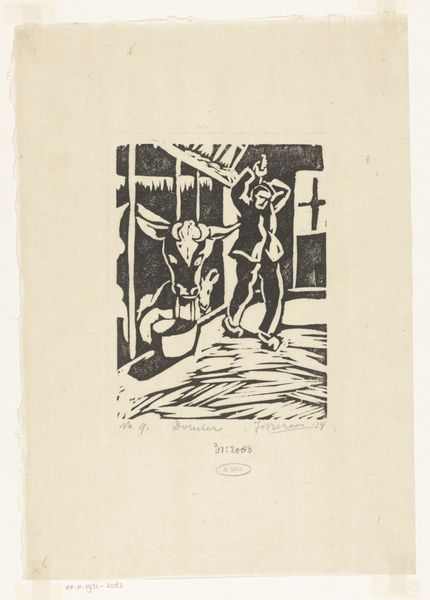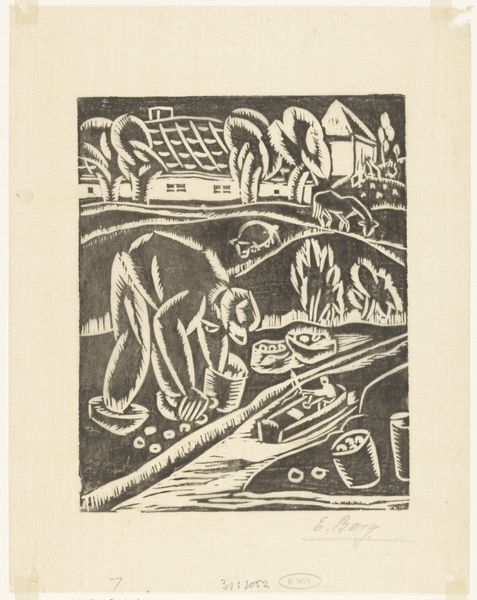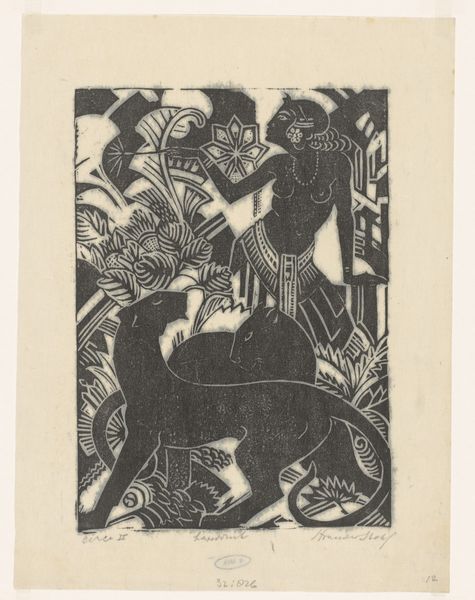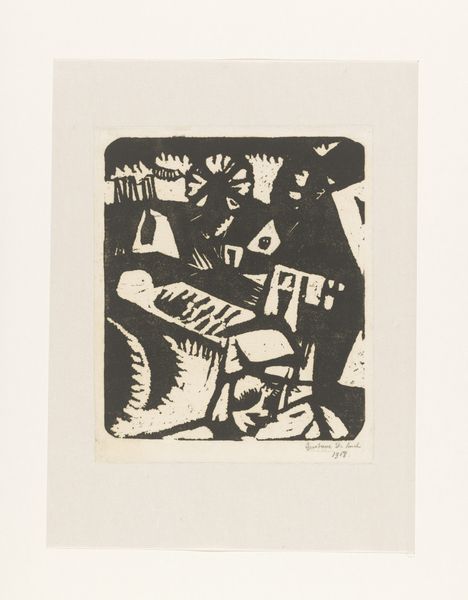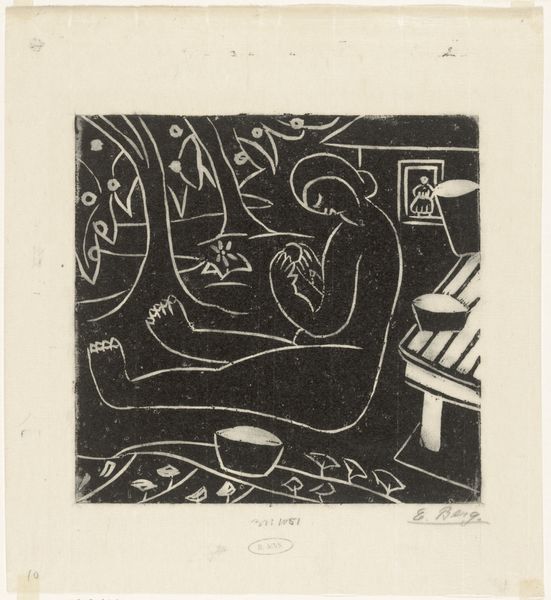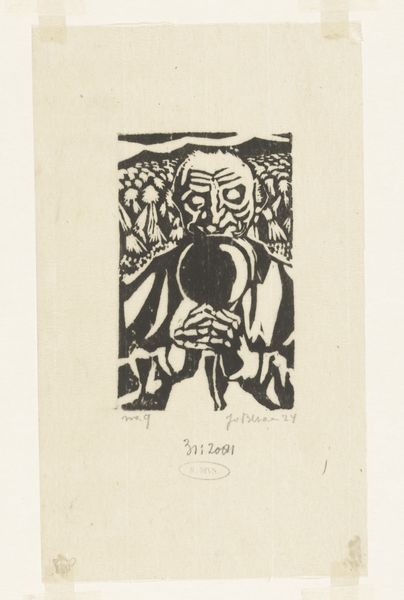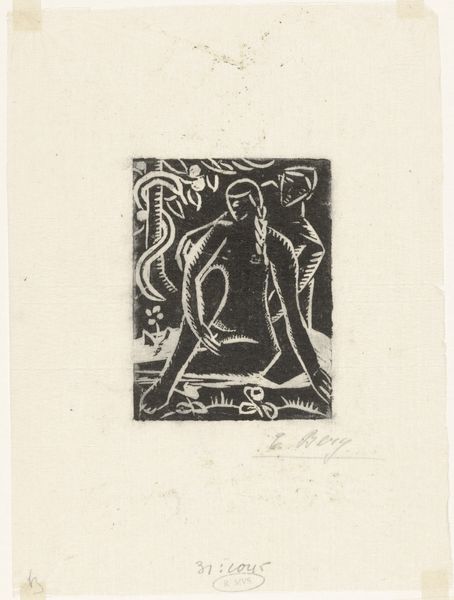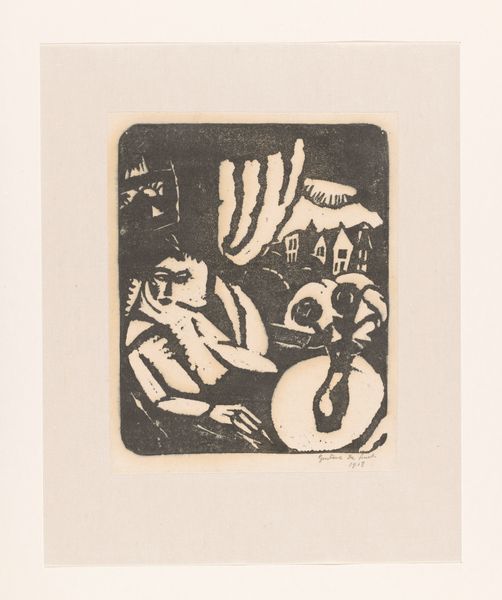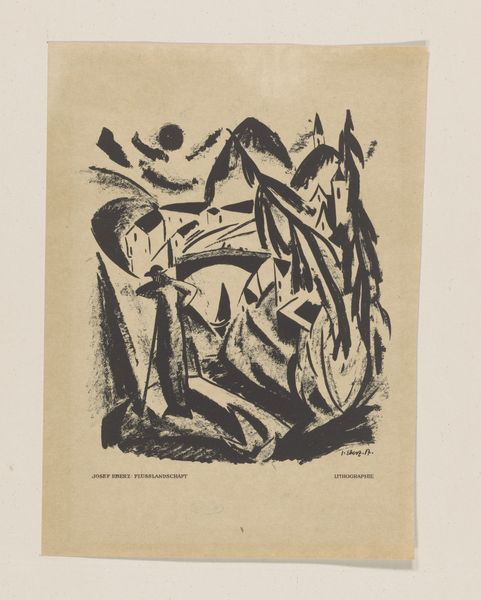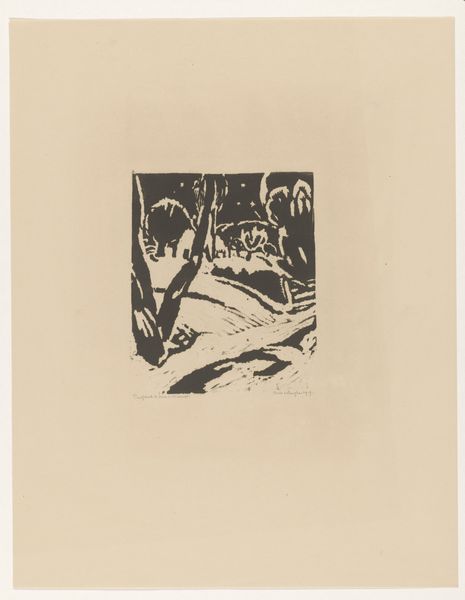
graphic-art, print, woodcut
#
graphic-art
# print
#
figuration
#
woodcut
#
line
#
modernism
Dimensions: height 170 mm, width 140 mm, height 305 mm, width 226 mm
Copyright: Rijks Museum: Open Domain
Curator: Before us, we have "Vrouw op bank" (Woman on Bench), a woodcut by Else Berg, created sometime before 1931. The piece showcases bold, graphic lines and a striking contrast between light and dark. Editor: Immediately, the piece strikes me with its directness and the almost naive rendering of the figure and setting. There’s a tension between the apparent simplicity and the implied complexities within. Curator: Indeed. The use of woodcut as a medium speaks to the broader art world at the time, where printmaking served both artistic and social functions, allowing for broader accessibility of images. Berg, as a Jewish woman artist working in the early 20th century, navigated constraints of gender, religious and ethnic identity and these contexts very likely shaped her artistic practice. Editor: I’m fascinated by the figure herself. There’s a sense of quiet contemplation. The apple, too, in her hand… is this an Edenic reference, a commentary on womanhood and knowledge? Or simply a still life rendered with potent symbolic resonance due to art history’s established themes? Curator: Possibly all. What's particularly intriguing from a material perspective is Berg's control over the wood. The sharp lines suggest skilled carving techniques but also speak to the broader aesthetics influencing graphic arts at this time, a movement celebrating handcrafted and anti-academic processes. There is also that container beside her that lends itself well to various interpretations. Is it empty, full, or an open question mark? Editor: Looking at this through an intersectional lens, I wonder how Berg might have been consciously or unconsciously reacting to or subverting societal expectations of women through this piece. Her placement within a garden or landscape—almost self-contained, perhaps reflects both the freedoms she sought but also the confining elements of that period. The gaze of the model is hard to grasp. There are traces of loneliness, strength and contemplation here. Curator: I agree, the artwork encapsulates those dualities—both an object of material production and an echo chamber of cultural concerns. Editor: A fruitful dialogue initiated by just a few strokes and stark juxtapositions. Curator: The piece then, more than just its aesthetic attributes, embodies complex layers of both artistic intentionality and socio-historical meaning that demand critical consideration.
Comments
No comments
Be the first to comment and join the conversation on the ultimate creative platform.

